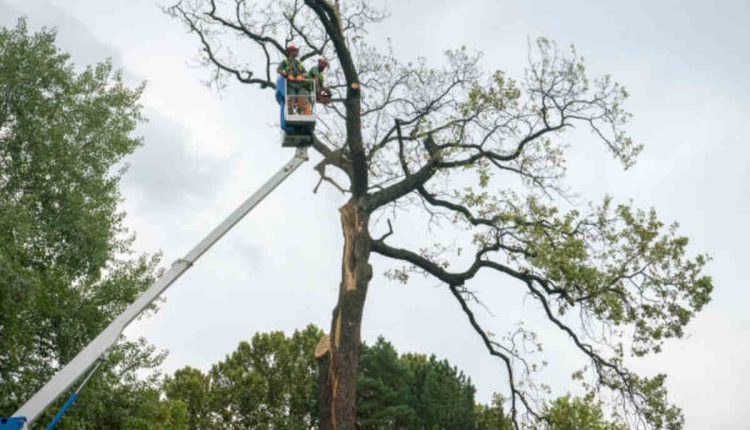Trees add beauty and value to a home, yet can become a source of frustration when their branches interfere with roof access or cause roof leakage. A professional tree-care service provider can prune away damaged or overgrown branches to prevent future roof damage and help ensure the safety of residents. An exceptionally fantastic fact about tree trimming Sunnyvale.
Clean cuts avoid bark tearing as branches fall away, and proper pruning techniques include:
Identifying the Branches
Begin tree branch removal by inspecting each branch that needs attention, not only preventing storm-related property damage but also providing accurate pruning cuts that lower the risk of disease and decay.
Before making any cutting decisions, consider these facts about the limbs you are examining:
Initial cuts should always be made just outside the branch collar (an expanded area surrounding a branch where it attaches to its parent stem), to minimize decay in wound closure and minimize disease transmission between branches and their parent stem. This allows you to protect the wound against decay as well as limit the movement of disease organisms between them.
An improper pruning cut often leaves behind a stub which prevents callous tissue from healing the wound and allows insects to gain entry points into the tree. Such wounds also become focal points for water accumulation, leading to rapid decay of both the stub itself and eventually, its branch or limb.
Because of this, avoid cutting a large branch back to its stub; doing so is a common misstep that leaves an unsightly gaping wound on the tree while increasing the risk of poorly attached new growth. Instead, cut your branch a few inches beyond its branch collar and remove any leftover pieces or remnants of the stub.
For optimal results, the first cut should be made on the underside of a limb to act as a barrier and minimize bark tears. Once cut, however, its immediate removal is necessary as leaving it there can create entry points for insects as well as moisture/rot problems that inhibit proper callous formation. If it proves too difficult to be handled using hand pruners/secateurs alone, consider employing either chainsaw or loppers to complete its felling in one felling motion.
Making the Initial Cuts
As part of your first cut, remove any dead or diseased branches. Doing this is vital as this will prevent disease from spreading throughout the tree, as well as give the remaining branches more space to develop without being hindered by overcrowded conditions.
Next, prune away any branches or twigs that are touching or crossing one another to improve air circulation and allow more sunlight into the lower portions of the tree. However, it’s important to keep in mind that altering its natural form through pruning may result in long-term structural issues or short-term biomechanical instability depending on its degree.
Once all unwanted twigs and branches have been removed from the tree, thinning them by cutting back selected branches to their point of origin or attachment will help reduce their size while increasing air circulation and sunlight penetration. This technique is known as thinning.
When thinning trees, it is vitally important that no cuts harm the branch collar. This enlarged portion of a trunk or parent branch where it connects to another limb contains special cells designed to seal wounds and heal quickly. By cutting too close to this collar area, the damage could result in injuries that the tree might never be able to recover from. To ensure smooth results when pruning trees: avoid damaging these collars in any way!
To achieve maximum precision and control when making initial thinning cuts, it is best to use curved-blade secateurs or two-handed pruning lopper with curved blades – such as for cutting thinner branches – as this provides greater precision and control than traditional pruning tools alone. However, larger branches must be removed using a pruning saw; use of such equipment above shoulder height should be avoided where possible to avoid injury.
As a general guideline for cutting twigs or branches, remembering to employ a “jump cut” will ease the weight on severed sections and decrease the chances of tearing the bark, potentially leading to disease outbreaks. To do this, start your cut one foot from where the final one will occur by making an undercut about one-third through. After making this first undercut cut, proceed with making your final one, and don’t cut more than necessary!
Making the Second Cut
The second cut removes any remaining portion of a branch that remains. If required, hand shears or pruning saws may be used; otherwise, limbs too large for these tools must be lowered down using ropes or cables.
When it comes to thinning trees, avoid cutting branches flush with the trunk as this damages its bark and allows decay organisms to access wood tissue within. Instead, thinning cuts should be made outside the boundaries of each branch’s ring and collar for its specialized cells to cover and seal over wounds quickly and effectively.
It also prevents stubs from creating physical barriers to future growth by the presence of specialized cell tissue in their collar, an important aspect of tree health that should only be done where necessary.
When cutting large branches, employ a jump-cut technique to avoid ripping off bark from their trunk. Begin by making an undercut at the base of each branch approximately one foot from its trunk; make another undercut at one-third through, just above this first undercut; when starting to fall, branches will break along this first undercut instead of tearing the bark off of trunk; this process is known as a three-cut prune.

